The Fraser Valley is in pole position to adopt prefabrication and other innovative construction methods despite the current market downturn, says a new report. There is a fundamental need for faster, “smarter” housing delivery, according to an Oct. 30 report by the Fraser Valley Real Estate Board (FVREB). …The FVREB report gives nine policy recommendations to accelerate prefab adoption. Chief among them is the need to harmonize municipal zoning. …The FVREB report highlights mass timber prefabrication as a particularly promising technology, saying it’s “a key component in off-site building methods.” One Metro Vancouver mass timber company with Fraser Valley projects says benefits include sustainability, suitability for prefabrication and quicker installation. But challenges include the need for wider education about how mass timber works differently as a structural system. …Coquitlam-based Seagate Mass Timber’s current projects in the Fraser Valley include a 92,000-square-foot covered soccer field.

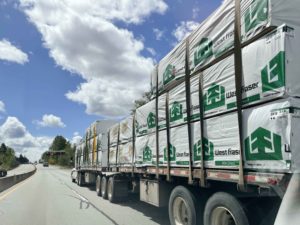 West Fraser-100 Mile Lumber employees like Kris Taylor are taking each day as it comes, following the announcement of the
West Fraser-100 Mile Lumber employees like Kris Taylor are taking each day as it comes, following the announcement of the 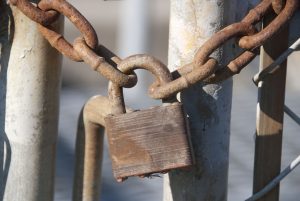 PRINCE ALBERT, Saskatchewan — The sale of a defunct Prince Albert pulp and paper mill from Domtar to the Ontario-based BMI Group has ended plans to re-open the mill and sparked a search for industrial business tenants for the site. “The site will never be a pulp mill again. That is for sure,” said Chris Rickett, BMI Group’s head of government and community relations. After eight months of negotiations, BMI purchased the former Weyerhaeuser Prince Albert pulp mill site and buildings from Domtar, Canada’s largest pulp and paper company. …The former Weyerhauser Prince Albert Pulp and Paper Mill ceased operations in 2006. Approximately 700 workers at the mill lost their jobs, with further indirect job losses in the forestry industry. A spokesperson for the One Sky Forest Products said it is gathering investors to build an oriented strand board (OSB) manufacturing plant on the former mill site.
PRINCE ALBERT, Saskatchewan — The sale of a defunct Prince Albert pulp and paper mill from Domtar to the Ontario-based BMI Group has ended plans to re-open the mill and sparked a search for industrial business tenants for the site. “The site will never be a pulp mill again. That is for sure,” said Chris Rickett, BMI Group’s head of government and community relations. After eight months of negotiations, BMI purchased the former Weyerhaeuser Prince Albert pulp mill site and buildings from Domtar, Canada’s largest pulp and paper company. …The former Weyerhauser Prince Albert Pulp and Paper Mill ceased operations in 2006. Approximately 700 workers at the mill lost their jobs, with further indirect job losses in the forestry industry. A spokesperson for the One Sky Forest Products said it is gathering investors to build an oriented strand board (OSB) manufacturing plant on the former mill site.  This is a rare opportunity to lead highly respected, independent oversight in one of the province’s most important and visible sectors. The Chair plays a pivotal role in strengthening public confidence in forest and range practices across BC. Ideal candidates bring strong governance experience, a background in forestry, and a commitment to transparent oversight. The Chair is a flexible, full-time role leading BC’s independent watchdog for forest and range practices. The Chair plays a key role in strengthening public trust in how the province’s forests and rangelands are managed. The Chair provides strategic leadership, oversees audits and investigations, approves reports, and represents the Board in engagements with Indigenous governments, provincial agencies, stakeholders, and the media. The role is well suited for someone with strong governance experience, sound judgment, and a balanced understanding of BC’s natural resource sector. Appointed by Order-in-Council for an initial term of 3 to 5 years the position may be re-appointed for additional terms of up to 5 years. Closing Date: December 11, 2025
This is a rare opportunity to lead highly respected, independent oversight in one of the province’s most important and visible sectors. The Chair plays a pivotal role in strengthening public confidence in forest and range practices across BC. Ideal candidates bring strong governance experience, a background in forestry, and a commitment to transparent oversight. The Chair is a flexible, full-time role leading BC’s independent watchdog for forest and range practices. The Chair plays a key role in strengthening public trust in how the province’s forests and rangelands are managed. The Chair provides strategic leadership, oversees audits and investigations, approves reports, and represents the Board in engagements with Indigenous governments, provincial agencies, stakeholders, and the media. The role is well suited for someone with strong governance experience, sound judgment, and a balanced understanding of BC’s natural resource sector. Appointed by Order-in-Council for an initial term of 3 to 5 years the position may be re-appointed for additional terms of up to 5 years. Closing Date: December 11, 2025 Government has launched Look West, a strategic plan to deliver major projects faster, expand skills training and grow key sectors to strengthen B.C.’s economy, creating good jobs and opportunities for people and businesses, and benefiting all of Canada. “British Columbia can get big things done – which is why our province is vastly overrepresented in the list of major projects Ottawa is fast-tracking,” said Premier David Eby. “This plan sets big goals as we make B.C. the economic powerhouse of Canada to create great jobs and drive prosperity in every corner of the province.” Look West rises to the challenges brought on by U.S. tariffs. The strategy sets a 10-year vision to strengthen B.C.’s economy, including continuing work to speed up permitting and diversify key sectors, so B.C.’s economy is less reliant on the United States.
Government has launched Look West, a strategic plan to deliver major projects faster, expand skills training and grow key sectors to strengthen B.C.’s economy, creating good jobs and opportunities for people and businesses, and benefiting all of Canada. “British Columbia can get big things done – which is why our province is vastly overrepresented in the list of major projects Ottawa is fast-tracking,” said Premier David Eby. “This plan sets big goals as we make B.C. the economic powerhouse of Canada to create great jobs and drive prosperity in every corner of the province.” Look West rises to the challenges brought on by U.S. tariffs. The strategy sets a 10-year vision to strengthen B.C.’s economy, including continuing work to speed up permitting and diversify key sectors, so B.C.’s economy is less reliant on the United States.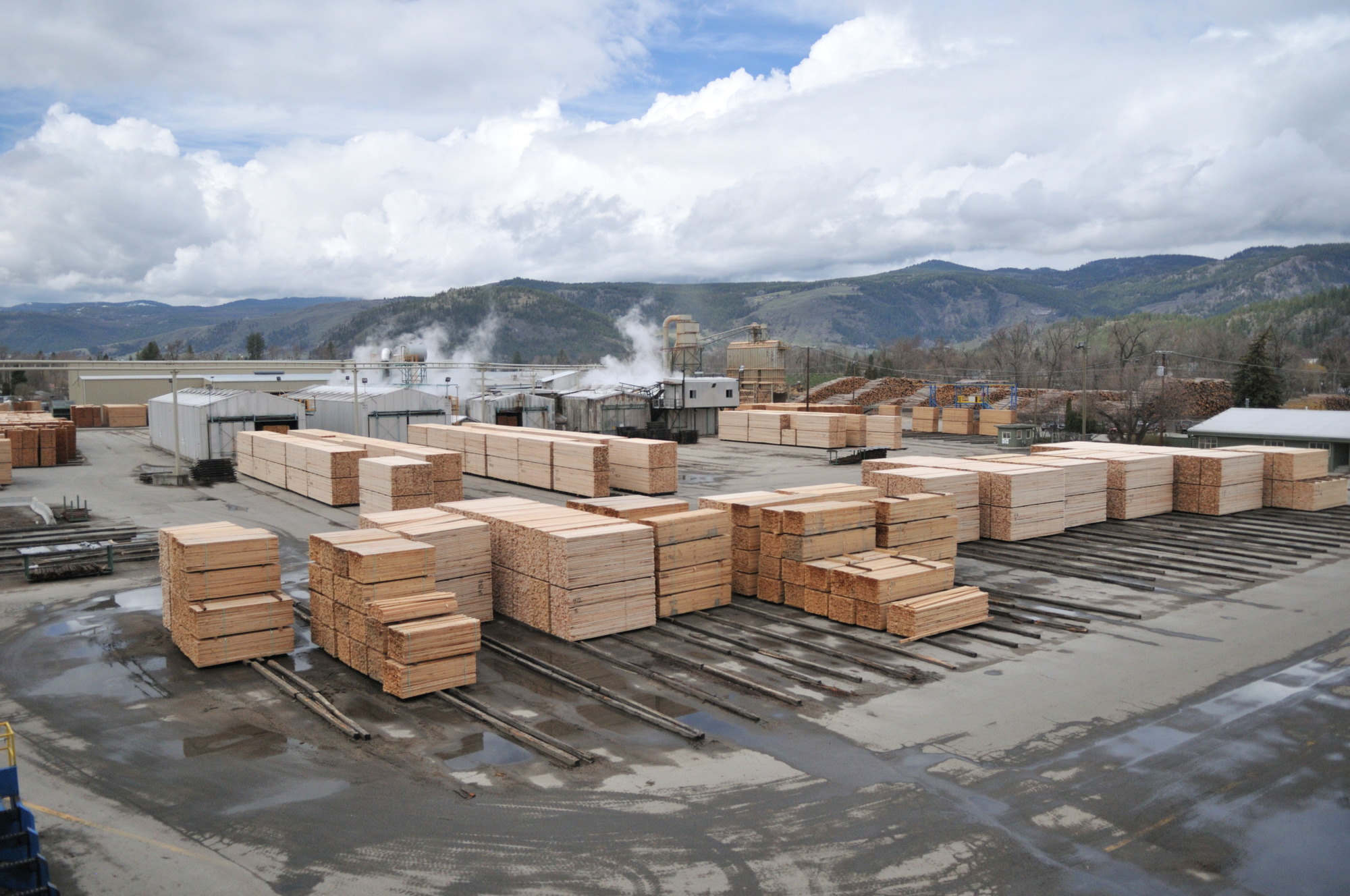
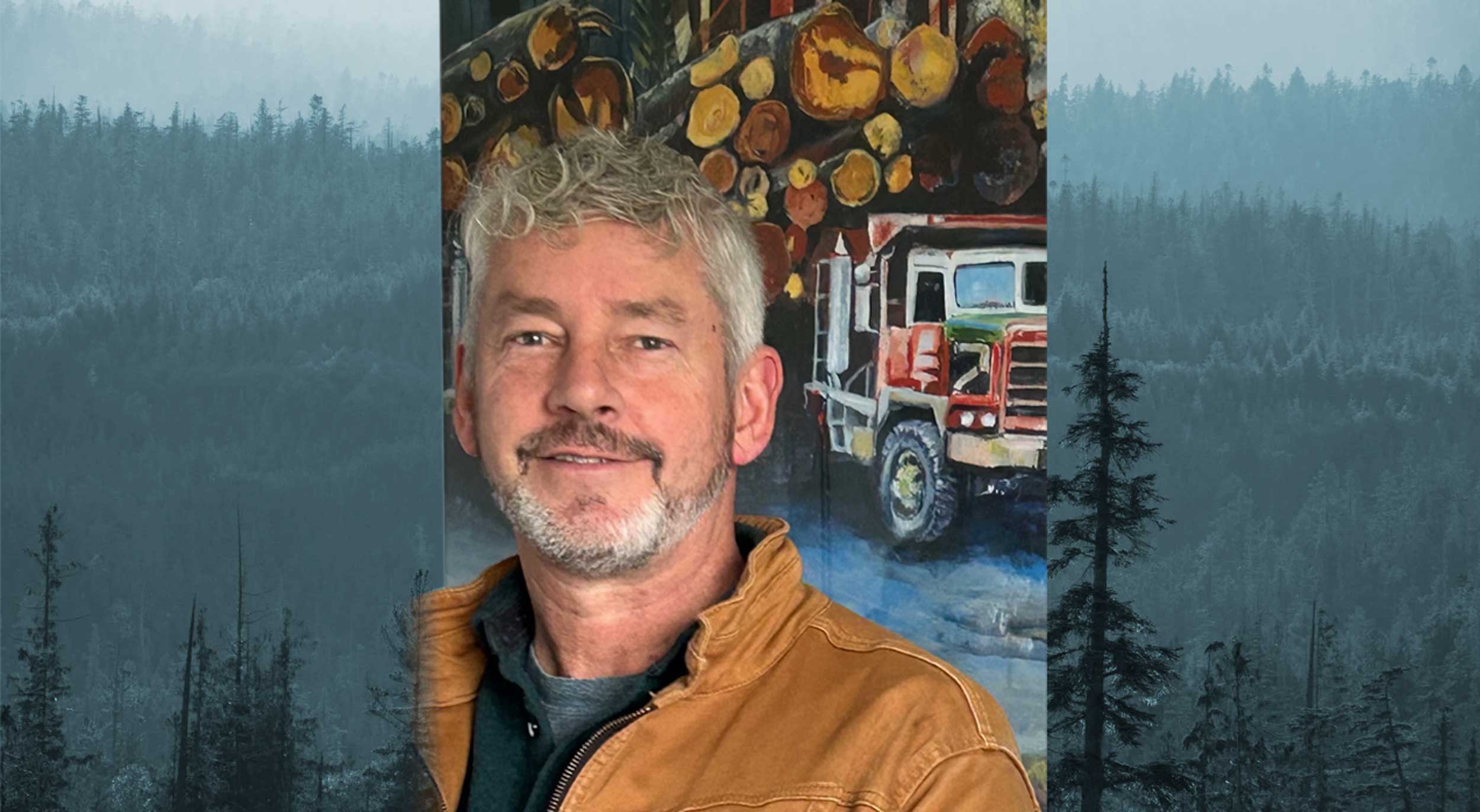
 Members of the management team for West Fraser’s 100 Mile Lumber appeared in front of the District of 100 Mile House Council to answer questions about the permanent closure of their 100 Mile House mill by the end of December. …Mayor Maureen Pinkney began the meeting, noting that the closure is sad news and that she was surprised they were going straight to closure without any curtailment. …Rob Baron, West Fraser’s regional manager of operations, said “The conditions that precipitated the decision to go to permanent closure are really entirely related to long-term viability related to the high cost of saw logs coming to this mill”. …They’re currently getting their shutdown coordinator set up and have resources on site to help their employees through the transition. …Baron said West Fraser doesn’t have any plans for what they’ll be doing with the property in the future, but welcomes anyone interested in the facility to contact them.
Members of the management team for West Fraser’s 100 Mile Lumber appeared in front of the District of 100 Mile House Council to answer questions about the permanent closure of their 100 Mile House mill by the end of December. …Mayor Maureen Pinkney began the meeting, noting that the closure is sad news and that she was surprised they were going straight to closure without any curtailment. …Rob Baron, West Fraser’s regional manager of operations, said “The conditions that precipitated the decision to go to permanent closure are really entirely related to long-term viability related to the high cost of saw logs coming to this mill”. …They’re currently getting their shutdown coordinator set up and have resources on site to help their employees through the transition. …Baron said West Fraser doesn’t have any plans for what they’ll be doing with the property in the future, but welcomes anyone interested in the facility to contact them.










 A leaked technical review prepared for a group of First Nations claims British Columbia is greatly overestimating how much timber it can sustainably harvest in a push for short-term economic gains. The previously unreleased report charges that the methods the province uses to calculate how many trees are on the landscape—and therefore how much can be logged—is fundamentally flawed and based on “wildly extreme assumptions” that hurt the long-term health of B.C.’s forests. The report’s authors … only agreed to speak with BIV after it independently obtained a 572-page draft of the report originally dated September 2024. “There’s a strong likelihood that throughout the province we’re cutting almost at twice the rate of what is considered sustainable,” said co-author Dave Radies. The report focuses on the Mackenzie timber supply area… The analysis challenges the methods B.C. uses to determine the annual allowable cut …concluding their numbers are likely double what can be harvested without causing significant long-term damage.
A leaked technical review prepared for a group of First Nations claims British Columbia is greatly overestimating how much timber it can sustainably harvest in a push for short-term economic gains. The previously unreleased report charges that the methods the province uses to calculate how many trees are on the landscape—and therefore how much can be logged—is fundamentally flawed and based on “wildly extreme assumptions” that hurt the long-term health of B.C.’s forests. The report’s authors … only agreed to speak with BIV after it independently obtained a 572-page draft of the report originally dated September 2024. “There’s a strong likelihood that throughout the province we’re cutting almost at twice the rate of what is considered sustainable,” said co-author Dave Radies. The report focuses on the Mackenzie timber supply area… The analysis challenges the methods B.C. uses to determine the annual allowable cut …concluding their numbers are likely double what can be harvested without causing significant long-term damage.



 Logs are a familiar sight on the beaches along the coast of Vancouver Island and Haida Gwaii and are often viewed positively, as they can stabilize the banks, be used for firewood or act as benches by beach-goers. However, new research from the University of Victoria (UVic) shows that these logs are not as innocuous as they seem. According to a study published by UVic biologist Tom Reimchen and two of his students, free-floating logs that wash ashore, referred to as drift logs, are causing widespread destruction of rocky intertidal ecosystems communities along the coast of Western Canada. …While drift logs may seem rather stable to the casual observer, more than 90 per cent of logs are displaced annually, and log movement during storms is frequent and extensive. This movement disrupts the ecological environment in the intertidal zone—the stretch of beach between the highest high tide and the lowest low tide. …This research was published in
Logs are a familiar sight on the beaches along the coast of Vancouver Island and Haida Gwaii and are often viewed positively, as they can stabilize the banks, be used for firewood or act as benches by beach-goers. However, new research from the University of Victoria (UVic) shows that these logs are not as innocuous as they seem. According to a study published by UVic biologist Tom Reimchen and two of his students, free-floating logs that wash ashore, referred to as drift logs, are causing widespread destruction of rocky intertidal ecosystems communities along the coast of Western Canada. …While drift logs may seem rather stable to the casual observer, more than 90 per cent of logs are displaced annually, and log movement during storms is frequent and extensive. This movement disrupts the ecological environment in the intertidal zone—the stretch of beach between the highest high tide and the lowest low tide. …This research was published in 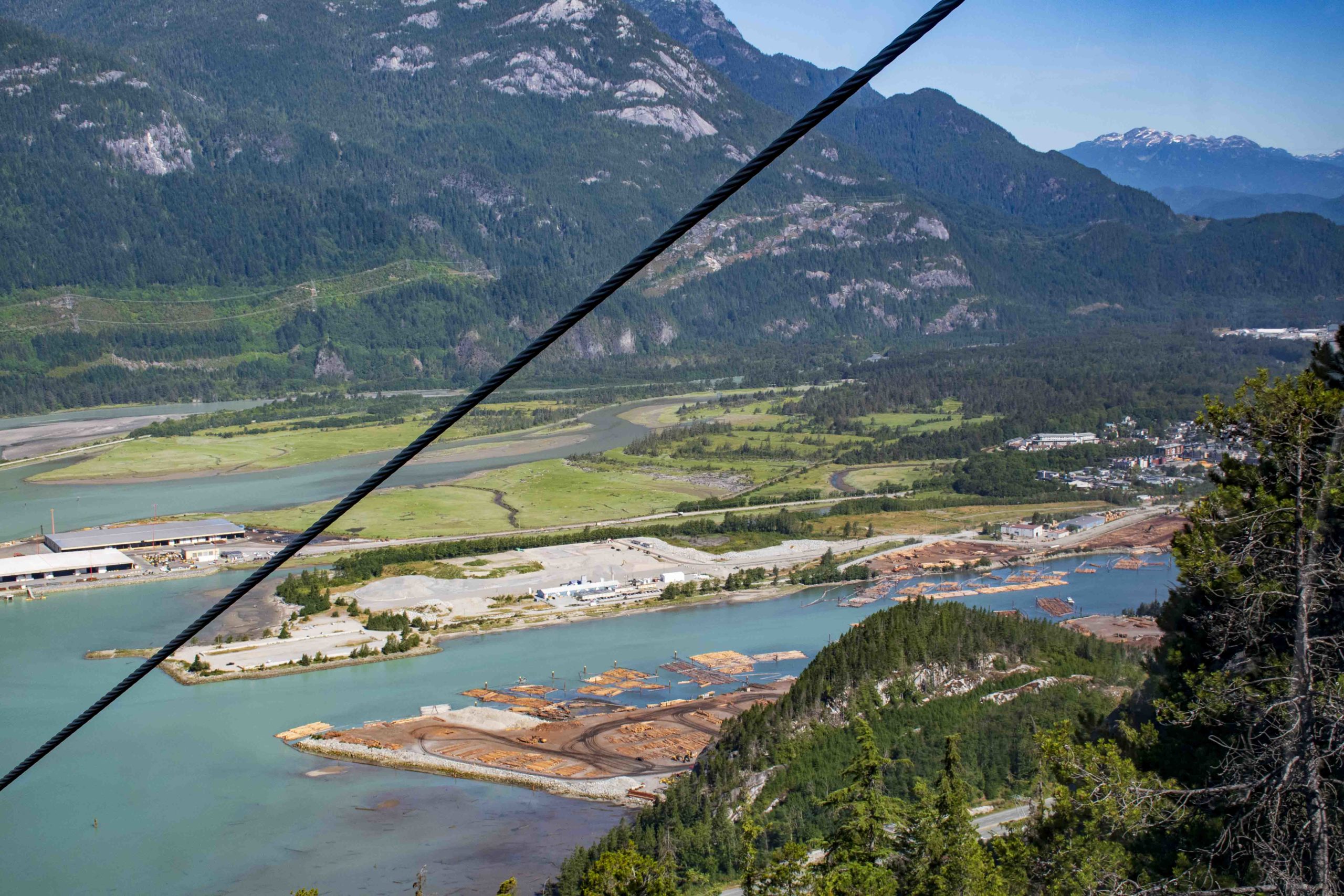 At a recent public open house, the Squamish Community Forest unveiled its vision for sustainable land use, cultural preservation, and wildfire mitigation over the next five years. The Squamish Community Forest functions on a Community Forest Agreement (CFA) and equal shareholding between Skwxwú7mesh Úxwumixw (Squamish Nation) and District of Squamish. This was their first ever partnership, as Squamish mayor and Community Forest chair Armand Hurford confirmed. The discussion that followed was centred around the sustainability and balance of cultural and environmental values. This year, the Community Forest has been given a $40,000 grant from the Silviculture Innovation Program (SIP) to implement silviculture in collaboration with the Nation’s Rights and Title and Cultural teams—a part of the Community Forest’s imminent five-year plan.
At a recent public open house, the Squamish Community Forest unveiled its vision for sustainable land use, cultural preservation, and wildfire mitigation over the next five years. The Squamish Community Forest functions on a Community Forest Agreement (CFA) and equal shareholding between Skwxwú7mesh Úxwumixw (Squamish Nation) and District of Squamish. This was their first ever partnership, as Squamish mayor and Community Forest chair Armand Hurford confirmed. The discussion that followed was centred around the sustainability and balance of cultural and environmental values. This year, the Community Forest has been given a $40,000 grant from the Silviculture Innovation Program (SIP) to implement silviculture in collaboration with the Nation’s Rights and Title and Cultural teams—a part of the Community Forest’s imminent five-year plan.

 Vernon, Revelstoke and Penticton will be included in a province-wide protest demanding a halt to old-growth logging on Tuesday. In Vernon, it’s being dubbed a “showdown at BC Timber Sales,” and the local organizers, which include the Peachland Watershed Protection Alliance and the Interior Watershed Task Force, are driving that adversarial image home by encouraging protesters to don western garb when they rally outside the Ministry of Forests office from 11 a.m. to 2 p.m. Nov. 18. Similar rallies are being held in Victoria, Nelson, Revelstoke, Smithers, Courtenay, Parksville, Prince George, Grand Forks, Penticton, Port Coquitlam, and Powell River. …Protest organizers took aim at Forestry Minister Ravi Parmar, saying seven B.C. mills have closed during his eight-month tenure. “Meanwhile he is off in Asia promising wood we do (not) have and opening trade offices … promising trees we do not grow,” the press release states. …A website,
Vernon, Revelstoke and Penticton will be included in a province-wide protest demanding a halt to old-growth logging on Tuesday. In Vernon, it’s being dubbed a “showdown at BC Timber Sales,” and the local organizers, which include the Peachland Watershed Protection Alliance and the Interior Watershed Task Force, are driving that adversarial image home by encouraging protesters to don western garb when they rally outside the Ministry of Forests office from 11 a.m. to 2 p.m. Nov. 18. Similar rallies are being held in Victoria, Nelson, Revelstoke, Smithers, Courtenay, Parksville, Prince George, Grand Forks, Penticton, Port Coquitlam, and Powell River. …Protest organizers took aim at Forestry Minister Ravi Parmar, saying seven B.C. mills have closed during his eight-month tenure. “Meanwhile he is off in Asia promising wood we do (not) have and opening trade offices … promising trees we do not grow,” the press release states. …A website, 
 Biologist Amber Peters and the Valhalla Wilderness Society (VWS) screened their highly-anticipated film, Safe Haven: The Rainbow-Jordan Wilderness, about the biodiverse and nearly-untouched inland temperate rainforest just north of Revelstoke. “This is the best example of a fully-intact inland temperate rainforest,” Peters said. … The Rainbow-Jordan is likely “the largest pocket of intact temperate rainforest in the region” around Revelstoke, Wildsight Revelstoke branch manager Reanne Harvey said. “The forest itself has been in that space for over a thousand years.” … The 30-minute film, produced in collaboration with Damien Gillis, advocates for the B.C. government to protect these expanses of hard-to-access and undisturbed old-growth from logging as a Class A provincial park. Unlike an old-growth protected area or Indigenous Protected and Conserved Area, park status would ensure legislated protection for the Rainbow-Jordan, Peters told some 200 attendees at the screening.
Biologist Amber Peters and the Valhalla Wilderness Society (VWS) screened their highly-anticipated film, Safe Haven: The Rainbow-Jordan Wilderness, about the biodiverse and nearly-untouched inland temperate rainforest just north of Revelstoke. “This is the best example of a fully-intact inland temperate rainforest,” Peters said. … The Rainbow-Jordan is likely “the largest pocket of intact temperate rainforest in the region” around Revelstoke, Wildsight Revelstoke branch manager Reanne Harvey said. “The forest itself has been in that space for over a thousand years.” … The 30-minute film, produced in collaboration with Damien Gillis, advocates for the B.C. government to protect these expanses of hard-to-access and undisturbed old-growth from logging as a Class A provincial park. Unlike an old-growth protected area or Indigenous Protected and Conserved Area, park status would ensure legislated protection for the Rainbow-Jordan, Peters told some 200 attendees at the screening.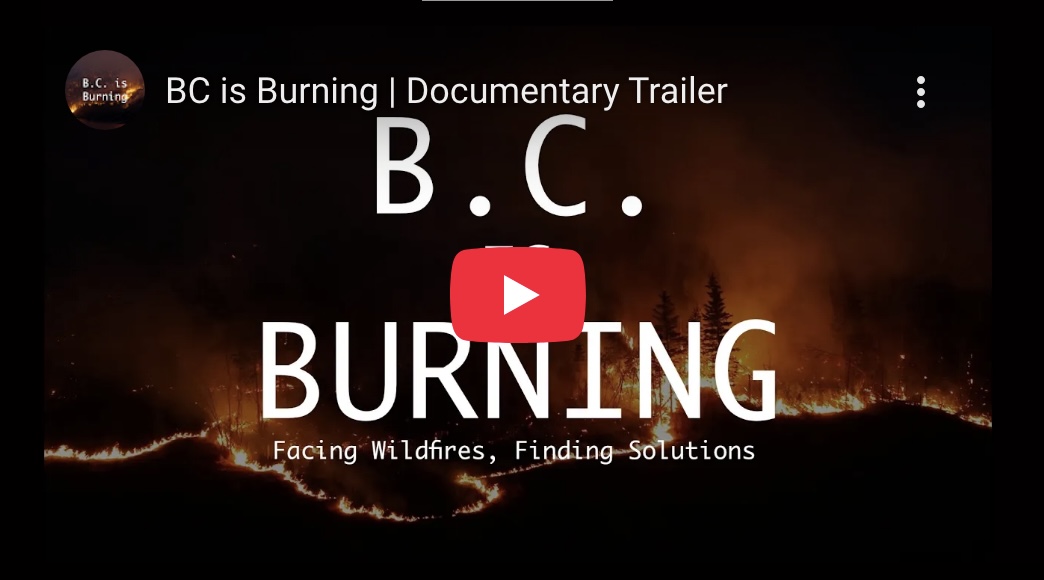 Murray Wilson believes active forest management is crucial to reducing greenhouse emissions. The connection between the two is wildfires. “If you can reduce wildfires, just on carbon alone – your CO2 emissions – you’re doing a good thing,” said the retired Vernon forester… For the past year, Wilson has been sharing this message, about the need for active forest management, with residents and politicians through his new and first film, the documentary B.C. is Burning. …The Shuswap Climate Action Society, Forsite Consultants Ltd. and Canoe Forest Products will present the film in Salmon Arm on Nov. 26, with a Q&A moderated by Salmon Arm Mayor Alan Harrison. …Wilson will be screening the documentary at the B.C. Legislature. He said government officials, including B.C. Wildfire assistant deputy minister Rob Schweitzer, featured in the film, have taken part in past screenings and question periods. He views this as a sign the documentary is resonating with the Province.
Murray Wilson believes active forest management is crucial to reducing greenhouse emissions. The connection between the two is wildfires. “If you can reduce wildfires, just on carbon alone – your CO2 emissions – you’re doing a good thing,” said the retired Vernon forester… For the past year, Wilson has been sharing this message, about the need for active forest management, with residents and politicians through his new and first film, the documentary B.C. is Burning. …The Shuswap Climate Action Society, Forsite Consultants Ltd. and Canoe Forest Products will present the film in Salmon Arm on Nov. 26, with a Q&A moderated by Salmon Arm Mayor Alan Harrison. …Wilson will be screening the documentary at the B.C. Legislature. He said government officials, including B.C. Wildfire assistant deputy minister Rob Schweitzer, featured in the film, have taken part in past screenings and question periods. He views this as a sign the documentary is resonating with the Province. A First Nations joint-venture forestry company is under fire for its burning practices. C̕awak ʔqin Forestry recently lit up a series of burn piles only a few metres from where a local company turns post harvest wood waste into much needed hogfuel for the Catalyst paper mill. Under provincial guidelines, forest harvesters are supposed to look for grinding or chipping opportunities ahead of burning. Keith Wyton from the local air quality council says local governments should push foresters to not burn. …Forest companies are allowed to pile and burn slash at this time of year, but Wyton wants the BC Government to step in. …C̕awak ʔqin General Manager Geoff Payne said they were operating within provincial guidelines and were permitted to burn. C̕awak ʔqin Forestry is a joint venture between Western Forest Products and the Huu-ay-aht First Nation.
A First Nations joint-venture forestry company is under fire for its burning practices. C̕awak ʔqin Forestry recently lit up a series of burn piles only a few metres from where a local company turns post harvest wood waste into much needed hogfuel for the Catalyst paper mill. Under provincial guidelines, forest harvesters are supposed to look for grinding or chipping opportunities ahead of burning. Keith Wyton from the local air quality council says local governments should push foresters to not burn. …Forest companies are allowed to pile and burn slash at this time of year, but Wyton wants the BC Government to step in. …C̕awak ʔqin General Manager Geoff Payne said they were operating within provincial guidelines and were permitted to burn. C̕awak ʔqin Forestry is a joint venture between Western Forest Products and the Huu-ay-aht First Nation.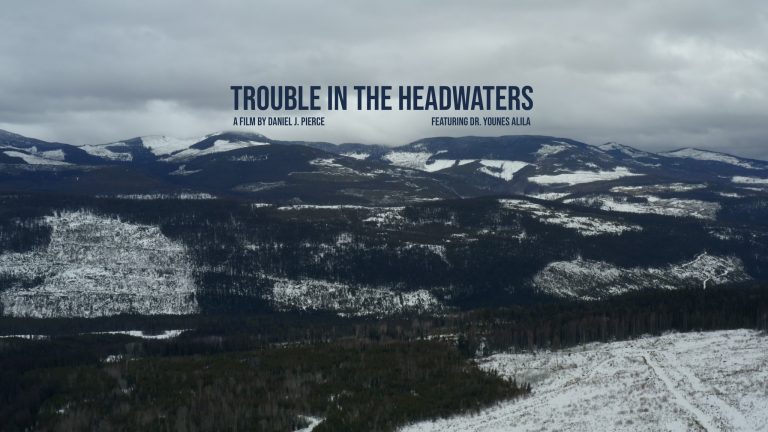 Trouble in the Headwaters, a 25-minute documentary by Daniel J. Pierce, is coming to Golden! This film sheds light on the disastrous 2018 flood event in Grand Forks, BC, and features UBC forest hydrology and watershed management Professor Dr. Younes Alila. Both Daniel and Younes will be present to introduce the film and answer questions afterwards as part of a panel discussion with local experts and Wildsight’s forestry team. Join us to explore the complex connection between clearcut logging and the increasing frequency of floods, landslides and droughts across our province.
Trouble in the Headwaters, a 25-minute documentary by Daniel J. Pierce, is coming to Golden! This film sheds light on the disastrous 2018 flood event in Grand Forks, BC, and features UBC forest hydrology and watershed management Professor Dr. Younes Alila. Both Daniel and Younes will be present to introduce the film and answer questions afterwards as part of a panel discussion with local experts and Wildsight’s forestry team. Join us to explore the complex connection between clearcut logging and the increasing frequency of floods, landslides and droughts across our province. 
 Nanaimo city council Coun. Paul Manly tabled a motion that asked staff to prepare a report with options for a zoning amendment for industrial lands that would exclude emissions-intense heavy industry such as “waste energy, incinerators, chemical plants, thermal electrical generators, petroleum refineries and [liquefied] natural gas export facilities” from existing industrial zones in order to require site-specific zoning. …Ryan Prontack, a manager for Harmac Pacific, Nanaimo Forest Products, also appeared as a delegation. He said Harmac is looking to diversify its operations and has about 61 hectares of industrial-zoned land ready to develop. “While this motion represents many different activities we currently do, it also represent many that we have plans to diversify in the future,” Protack said. Manly said the motion does not affect Harmac’s current operations and is not about “blocking industry uses in perpetuity” but is about ensuring the city has a democratic process to evaluate project proposals.
Nanaimo city council Coun. Paul Manly tabled a motion that asked staff to prepare a report with options for a zoning amendment for industrial lands that would exclude emissions-intense heavy industry such as “waste energy, incinerators, chemical plants, thermal electrical generators, petroleum refineries and [liquefied] natural gas export facilities” from existing industrial zones in order to require site-specific zoning. …Ryan Prontack, a manager for Harmac Pacific, Nanaimo Forest Products, also appeared as a delegation. He said Harmac is looking to diversify its operations and has about 61 hectares of industrial-zoned land ready to develop. “While this motion represents many different activities we currently do, it also represent many that we have plans to diversify in the future,” Protack said. Manly said the motion does not affect Harmac’s current operations and is not about “blocking industry uses in perpetuity” but is about ensuring the city has a democratic process to evaluate project proposals. Each year, the BC Forest Safety Council honours individuals who go above and beyond to make forestry safer for everyone. Since 2008, the Leadership in Safety Awards have recognised outstanding contributions in three key areas: harvesting, manufacturing and lifetime achievement. These awards honour people who lead by example—those who bring fresh ideas, foster a strong safety culture and consistently put the well-being of others first. …Congratulations to all of this year’s award recipients! Your leadership, care and commitment continue to make BC’s forestry industry safer and stronger. Nominations for the 2026 Leadership in Safety Awards open on January 12, 2026.
Each year, the BC Forest Safety Council honours individuals who go above and beyond to make forestry safer for everyone. Since 2008, the Leadership in Safety Awards have recognised outstanding contributions in three key areas: harvesting, manufacturing and lifetime achievement. These awards honour people who lead by example—those who bring fresh ideas, foster a strong safety culture and consistently put the well-being of others first. …Congratulations to all of this year’s award recipients! Your leadership, care and commitment continue to make BC’s forestry industry safer and stronger. Nominations for the 2026 Leadership in Safety Awards open on January 12, 2026.